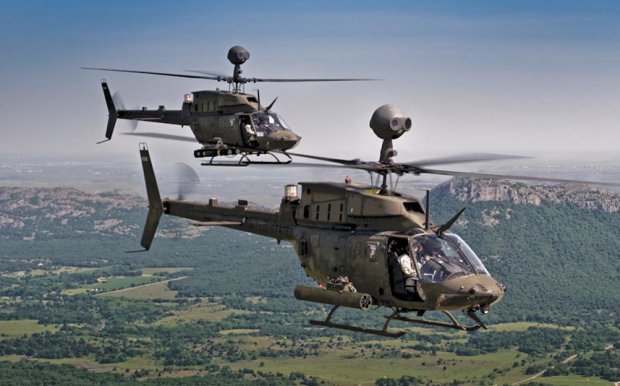 While the role of UAS is expected to grow in future operations, one senior U.S. Army official says manned aircraft won’t go away any time soon.In fact, the Army and industry want to empower those pilots by giving them the ability to control several UAS at once.
While the role of UAS is expected to grow in future operations, one senior U.S. Army official says manned aircraft won’t go away any time soon.In fact, the Army and industry want to empower those pilots by giving them the ability to control several UAS at once.
“It will always be a balance” of manned and unmanned assets, Lt. Gen. Bill Phillips, principal military deputy to the assistant Army secretary, told an Army Aviation Association of America conference in northern Virginia on Dec. 12. “You need situational awareness, and you need the curiosity of the human inside the cockpit.”
But as budgets flatten in coming years and planners are hard pressed to find efficiencies, the temptation to field more unmanned systems, which are less expensive, might be hard to resist, Phillips admitted.
While budget cuts “may drive us toward [more unmanned systems], at the end of the day we have to get it right and ensure that there is the appropriate balance,” he said. “I don’t think you’ll ever get the human out of the cockpit,” Phillips continued. “Having someone there who can see the battlefield 360 degrees — it’s so important.”
The Army isn’t planning to jettison its fleet of attack and reconnaissance helicopters. But as Phillips said, there are many reasons for the service to invest more in its unmanned fleet and explore more ways in which its manned and unmanned aircraft can work together.
The AH-64 Apache Block III helicopter comes equipped with software that allows it to receive data and imagery from Gray Eagle UAS, while the OH-58 Kiowa Warrior helicopter has been pairing with Shadow UAS. Phillips said the Army is studying the capabilities of the Block III upgrade and what it offers when evaluating future moves.
While Boeing and Lockheed Martin have been working on these capabilities with the Apache programme, Bell Helicopter and AAI — operating under the Textron corporate umbrella — are also making a big push to get involved in the emerging manned-unmanned pairing.
On Dec. 4, the companies unveiled a laboratory in Huntsville, Ala., that will be used to train pilots and UAV operators in the latest tactics, techniques and procedures, while also helping the Army experiment with and evaluate new technologies, according to company officials.
The lab provides “simulation, modeling and new engineering capabilities” that bring together AAI’s Shadow US, Bell’s Kiowa Warrior helicopter and the Universal Ground Control Station while allowing users to combine live data feeds in high-fidelity simulated environments, said Bill Irby, senior vice president and general manager of AAI Unmanned Aircraft Systems.
The simulation capabilities will be key, Irby said, since they will allow users at the lab to tie in with major Army exercises such as the Network Integration Evaluations at Fort Bliss, Texas, and at other training and evaluation events. The ability to realistically simulate events will also help the service drive down training costs, he said. The lab is capable of streaming live imagery collected from Shadow UAS at the Army’s Redstone Arsenal, Ala., for use during simulations and tests.
A major component of the lab is a Bell helicopter simulator linked to multiple generations of the Shadow, from older systems to more recent Tactical Common Data Link-equipped systems.
“We’re able to do interoperability with all of these assets with the actual tactical software that’s out there, which is unique,” said Peter Blocker, vice president of Huntsville operations for AAI. He said the company is interested in exploring with the Army the ability of a single helicopter to interact with or control several UAS at once.
“Today, the only manned/unmanned capability that’s there is one unmanned asset and one helicopter. One of the ideas this lab can look at is two or three unmanned aircraft with a helicopter,” Blocker said.
Ellen Lord, president and CEO of Textron Systems, said the company has made a “significant” financial investment in setting up the lab, but declined to provide any dollar amount. But given the financial realities of the moment, she said, “we are making choices about discretionary spending and capital investment, and we believe that unmanned teaming is a critical area for the military, so we are putting our money behind the concept.”
Photo: Bell OH-58D Kiowa
Source: Defense News
